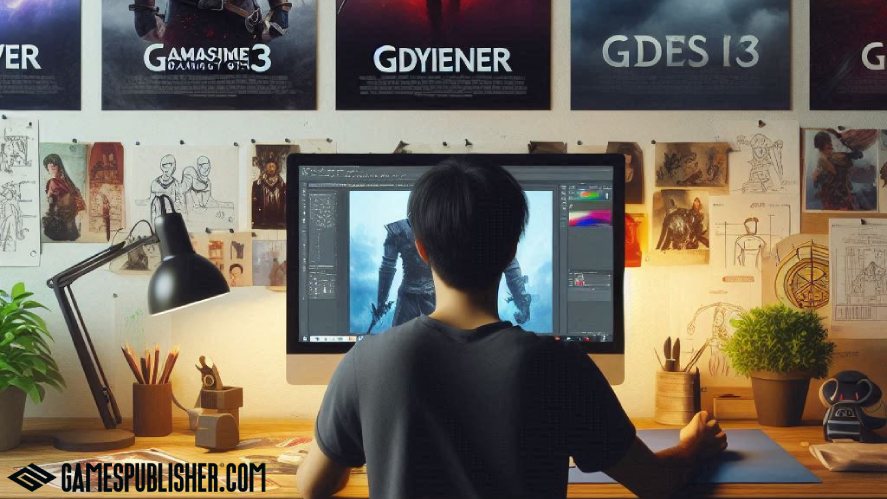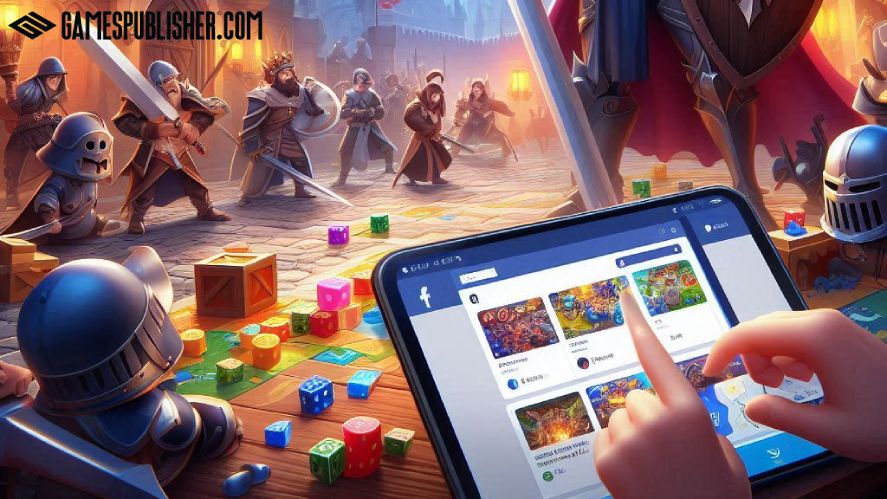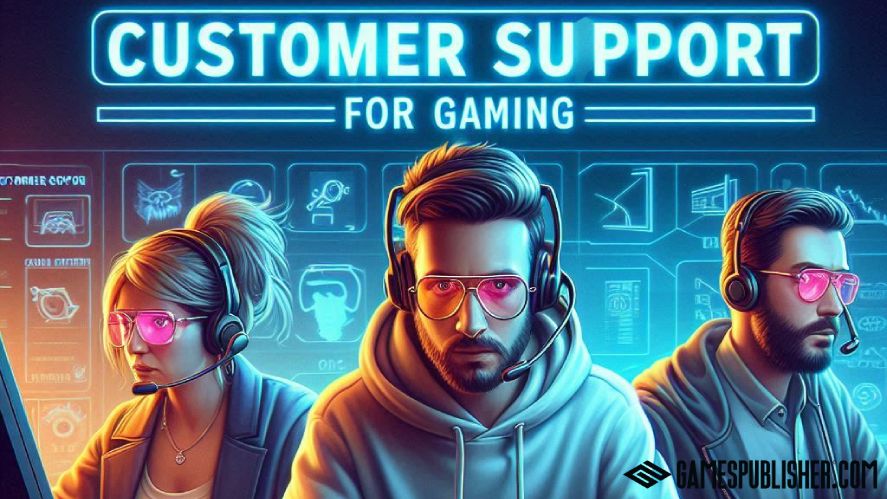An indie game is short for an independent game made by individuals or small groups without sponsorship from big studios.
To help indie games grow, developers can use technological advances and video game distribution platforms like Steam and Itch.io. Creative freedom has also played a big role.
As a result, millions of video game publishers worldwide are now attracted to indie games. This has caused a shift from big studio products to independent developers in the video game industry.
Thus, understanding finances is crucial for making a successful game and growing sustainably.
It helps developers plan carefully, manage expectations, and use resources wisely. So, knowing how to develop an indie game budget plan increases your chances of success.
Costs of Developing an Indie Game
Developing an indie game involves various essential costs that are crucial for its success. From planning to quality assurance, every step needs to be comprehended.
Pre-Development Expenses
Pre-development expenses are important. They help minimize risks and ensure the market is suitable, protecting your financial interests.
You must set aside funds for experts’ salaries, software licenses, and workspace costs during the idea stage.
Market research costs can vary. They can be free or run up to several thousand dollars, depending on the depth and scope of the study.
This includes costs for research tools, surveys, and consulting services.
Besides, legal fees cover registration, legal consultation, contracts, and agreements with relevant parties.
Software and Tools
There are many software and tools to use for game development.
Choosing the right ones within your budget is crucial for developing indie games.
- Game Engines: Developers can choose between Unity and Unreal Engine. Unity has both a free version and a paid version. Unreal Engine provides a free version. However, you’ll need to pay royalties once your game makes a certain amount.
- Graphic Design Tools: Adobe Photoshop and GIMP are two popular choices. Adobe Photoshop requires a monthly fee, while GIMP is free.
- Audio Software: Adobe Audition and Audacity are top choices. Adobe Audition requires a monthly fee, while Audacity is free. FL Studio offers a free trial version, but you must buy a license to access all features.
Hardware Requirements
Developers need to invest in essential hardware to ensure the quality of the indie game.
This includes computers, testing devices, and other necessary technologies.

Computers
Typical game production tools for developers include desktop computers and laptops.
Desktop is a common choice due to its upgrade flexibility and strong performance capabilities.
They should meet the following minimum specifications.
- CPU: Intel Core i5 or AMD Ryzen 5 and above
- RAM: Minimum 16GB (32GB is ideal for larger projects)
- GPU: NVIDIA GTX 1660 or AMD Radeon RX 580 and above
- Storage: 512GB SSD for the operating system and software, plus an additional 1TB HDD for project storage.
On the other hand, the laptop enables developers to meet the need for flexibility at work.
Consider the following specifications:
- CPU: Intel Core i7 or AMD Ryzen 7 and above
- RAM: Minimum 16GB
- GPU: NVIDIA GTX 1660 Ti or AMD Radeon RX 5500M and above
- Storage: SSD 512GB
Monitors
Factors like resolution, size, and scanning frequency are important considerations.
They contribute to protecting the eyes of game developers and enhance display quality.
- Resolution: Full HD (1920×1080) is minimum, QHD (2560×1440) or 4K (3840×2160) is ideal
- Size: From 24 inches and up
- Scan frequency: 60Hz for normal work, 144Hz or more if working with games that require high-speed
Testing Devices
Testing devices are essential in the gaming industry.
They help ensure the game runs smoothly on different platforms and devices without errors.
For games made for consoles, you’ll need specific testing devices.
- PlayStation: PlayStation 4 and PlayStation 5
- Xbox: Xbox One and Xbox Series X
- Nintendo Switch: Both standard and Lite versions
Moreover, developers need to test various types of devices to ensure compatibility.
- Android: Phones like Apple, Samsung, Xiaomi
- iOS: iPhones and iPads from different generations
Other Technologies
Keyboards, mice, and headphones are important tools for making games. These tools need to be durable and have high responsiveness.
You might also need a graphics tablet for design work, a UPS for power backup, a cooling system, and a good internet connection.
Human Resources
To manage finances effectively, the costs related to hiring personnel are also crucial for developers’ success.
Key positions such as programmers, designers, artists, and sound engineers often require high salaries or complex allowances.
Contract employees typically offer flexibility and cost savings as they are not on a fixed salary.
Hiring people full-time means they ensure commitment and stability, but it costs a lot of money, which might not work for small or short projects.
Game Design and Development
Designing and developing games is a complex process that causes significant costs for game producers.
The pre-production stage involves forming ideas, planning, and designing.
These costs ensure that concepts are developed effectively. It also helps minimize risks when moving into the next stage.

The process’s next stage is production.
This stage often includes the highest costs, such as salaries, legal fees, hardware equipment, and operations. This stage ensures high-quality development and meets game producers’ requirements.
Post-production is the final stage, including debugging, optimization, marketing, localization, and distribution.
This helps refine the game, make it easily accessible to players, and optimize income after launching it.
Testing and Quality Assurance
Bug testing and beta testing to ensure quality is an essential and indispensable part of the game production process.
Bug testing helps ensure the game runs smoothly and stably before being released to the market.
Related costs include staff spending time on testing and testing system costs.
Beta testing stages help gather feedback on the gaming experience. That helps resolve the issue of improving the game before releasing it to the market.
For this, developers must pay the costs of organizing beta events or purchasing third-party testing services.
Publishing and Marketing Costs
As we learn more about indie game development, we’ll soon discuss the costs related to publishing and marketing.
These expenses are essential in ensuring the game reaches its intended audience. Thereby, you will easily achieve success in the competitive gaming market.

Self-Publishing vs. Partnering with Publishers
Depending on the decision and business goals. Game developers may choose to self-publish or cooperate with publishers.
Self-publishing on gaming platforms like Steam or Epic Store gives developers freedom and control. But it also means bearing all development, marketing, and post-sales support costs.
Therefore, the initial profit is relatively low compared to the expenses.
Cooperating with a publisher helps gain financial benefits quickly. However, it can lose creative freedom and require sharing profits with the publisher more than with platforms like Steam or Epic Store.
Marketing and Promotion
Indie game marketing strategies are essential to build a wide-reaching gaming community. Thereby bringing financial benefits to the producers.
To increase interaction and promote the gaming community. Global platforms like Facebook, Instagram, Twitter, TikTok, etc., cannot be ignored.
Developers should cooperate with influential partners such as celebrities and streamers. They will help you easily achieve marketing success on social media.
To ensure financial resources are used efficiently, indie game publishers need to consider using money wisely, such as apportioning budgets for marketing.
Distribution Costs
When distributing games, developers often face a variety of costs.
Platform fees are based on a percentage or fixed fees from each game copy sold on platforms like Steam or the App Store.
Transaction fees per game sale also cannot be overlooked. These costs may be small, but when accumulated, they can still generate significant money.
Physical distribution is an option for developers who want to make discs or prints, handle packaging, and manage shipping. However, it comes with extra expenses.
Post-Launch Expenses
Publishing is just the beginning of a game developer’s success.
Let’s cover the post-release expenses of an independent game development journey!

Maintenance and Updates
Maintaining a game requires ongoing costs that developers need to consider.
Server costs include renting or purchasing servers, bandwidth, and system maintenance. These ensure a smooth, uninterrupted, 24/7 experience.
To retain players, developers must provide regular updates to keep the game fresh and engaging. This involves paying for personnel such as programmers, designers, and artists.
Games, upon release, always have bugs and technical issues. Developers will need to bear costs for patches to update to better versions continuously.
Sometimes, there are costs for serious issues that need to be handled immediately.
Customer Support
Customer support plays a pivotal role in maintaining and enhancing player experience. It helps them minimize disappointments.
The gaming community will become stronger and more passionate through built loyalty and trust.
Costs related to customer support include expenses for technical teams or tools and software such as ticket management systems and live chat.
Gathering Feedback and Iterating
For updates, games still need to receive feedback. This provides valuable information about diverse users’ actual experiences during gameplay.
In today’s competitive market, it helps developers easily shape the future. Then, you can continuously update for even more relevance and appeal to new and existing gamers.
Costs associated include feedback income, labor costs, and update deployment costs.
Although it consumes a lot of budget for producers, the financial benefits it brings are also significant.
Case Studies and Examples – Indie Game Budget Sample
Success and failure are both integral parts of the indie game landscape.
Each offers unique insights and lessons to developers.
Successful Indie Video Games
The indie game community has made many successful games.
Here are a few indie game budget examples:
- Among Us: Among Us was one of the best indie games that was successful in 2020. It was downloaded nearly 42 million times on Steam in the first half of September and almost 84 million on iOS and Android. With a budget of about $50,000, Among Us focused on improving sound and marketing.
- Cuphead: The cuphead is considered a masterpiece. It sold over 6 million copies in just 3 years. This success was because they used their $10 million budget smartly to make a high-quality and unique game.
- Stardew Valley: Indie game developers did a great job with Stardew Valley. They combined fun gameplay with building a community of passionate players. They made the game themselves with a budget of $5,000, saving money on hiring people but still making a successful game.

Lessons Learned
Besides success, there are also independent game projects that fail.
This provides valuable lessons to help developers learn from mistakes so that the indie game industry can continue to grow and be more creative.
The first important lesson is about budget. Developers need to manage their budgets in detail and anticipate unforeseen expenses.
Developers should diversify capital sources and set realistic capital-calling goals to avoid dependence.
Thorough market research is necessary, including clearly identifying the target audience and ensuring appropriate launch timing.
Developers need to manage the project scope realistically to avoid expanding further and to ensure deadlines are met.
Conclusion
The production costs for each indie game vary significantly, with each stage impacting the project’s overall success.
So, understanding the key points will provide a true perspective for budget allocation in your game.
Loading survey...

